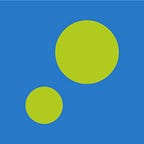Top 10 Benefits of Remote Patient Monitoring
Remote patient monitoring (RPM) uses technology to collect patient data outside traditional healthcare settings. This approach benefits patients, clinicians, caregivers, and the healthcare system.
There are several benefits of remote patient monitoring to consider. These include increased access to virtual healthcare, more ways to communicate with healthcare providers, and improved patient involvement in self-care. Additionally, it helps reduce the spread of COVID-19 and lowers the overall cost of healthcare.
Let’s look at ‘What are the benefits of remote patient monitoring in detail:
- Enhanced Patient Care and Outcomes
Improved monitoring and management of chronic conditions
Remote patient monitoring benefits, especially for people with chronic illnesses like diabetes, heart disease, or hypertension. Monitoring vital signs helps healthcare providers manage chronic illness. It also helps improve the quality of life. This is done by tracking blood pressure, blood glucose levels, and more.
Timely detection of health issues and early intervention
In short, remote monitoring in healthcare helps professionals quickly identify changes or worsening symptoms by continuously monitoring patients’ health information. Also, early identification enables quick intervention and therapy modifications, lowering the risk of complications and increasing patient outcomes.
Personalized care plans based on real-time data
Remote patient monitoring (RPM) not only helps doctors create personalized treatment plans using real-time patient data but also leads to better therapies and helps patients follow treatment strategies more effectively.
Better patient engagement and empowerment in their health
RPM empowers patients since they have access to their health data and progress. Being involved makes patients feel responsible and motivated to manage their health, leading to better health results.
2. Continuous Remote Monitoring
24/7 monitoring of vital signs and health parameters
Continuous Remote Monitoring allows healthcare practitioners to obtain real-time patient data and monitor their health state continuously. Moreover, quick access to data enables early detection of changes, leading to faster interventions and improved patient results.
Real-time data transmission and analysis
Continuous monitoring gathers lots of data, helping healthcare professionals to analyze long-term patient health patterns.
